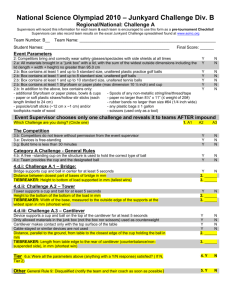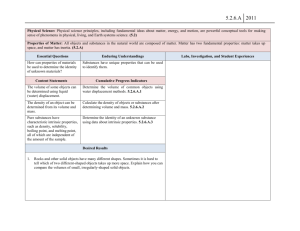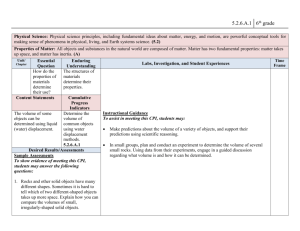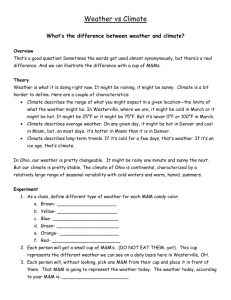Experiment with a Ball and Ramp
advertisement
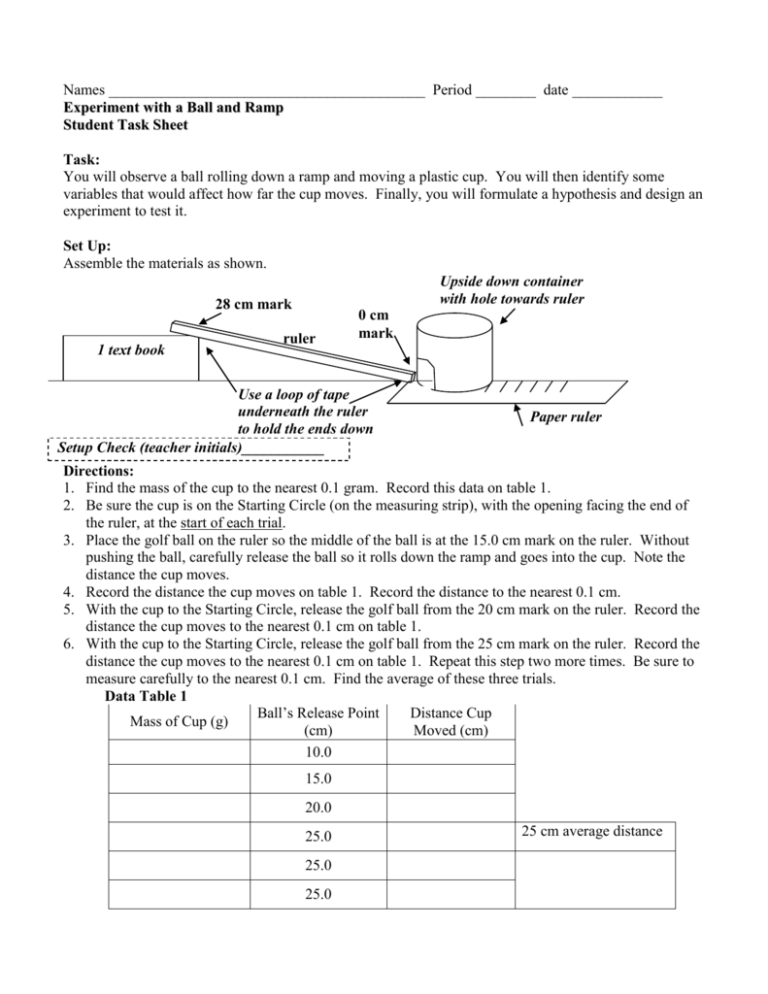
Names __________________________________________ Period ________ date ____________ Experiment with a Ball and Ramp Student Task Sheet Task: You will observe a ball rolling down a ramp and moving a plastic cup. You will then identify some variables that would affect how far the cup moves. Finally, you will formulate a hypothesis and design an experiment to test it. Set Up: Assemble the materials as shown. Upside down container with hole towards ruler 28 cm mark 1 text book ruler 0 cm mark Use a loop of tape underneath the ruler to hold the ends down Setup Check (teacher initials)___________ Paper ruler Directions: 1. Find the mass of the cup to the nearest 0.1 gram. Record this data on table 1. 2. Be sure the cup is on the Starting Circle (on the measuring strip), with the opening facing the end of the ruler, at the start of each trial. 3. Place the golf ball on the ruler so the middle of the ball is at the 15.0 cm mark on the ruler. Without pushing the ball, carefully release the ball so it rolls down the ramp and goes into the cup. Note the distance the cup moves. 4. Record the distance the cup moves on table 1. Record the distance to the nearest 0.1 cm. 5. With the cup to the Starting Circle, release the golf ball from the 20 cm mark on the ruler. Record the distance the cup moves to the nearest 0.1 cm on table 1. 6. With the cup to the Starting Circle, release the golf ball from the 25 cm mark on the ruler. Record the distance the cup moves to the nearest 0.1 cm on table 1. Repeat this step two more times. Be sure to measure carefully to the nearest 0.1 cm. Find the average of these three trials. Data Table 1 Ball’s Release Point Distance Cup Mass of Cup (g) (cm) Moved (cm) 10.0 15.0 20.0 25.0 25.0 25.0 25 cm average distance 7. What was the independent variable? ______________________________________________ 8. What was the dependent variable? ________________________________________________ 9. Was there a control group? Explain. ______________________________________________ 10. Use the following grid to make a line graph of the results shown in Data Table 1. The independent variable always goes on the X-axis and the dependent variable goes on the y-axis. Be sure to label and number the axes and give your graph a title. (use the average 25 cm data) 11. You probably noticed that the cup traveled slightly different distances when you released the ball three times from the 25.0 cm mark. Analyze your test. Give two reasons that might explain why the cup did not stop at the exact same location each time. First reason: ___________________________________________________________________ Second reason: _________________________________________________________________ 12. Think about how you might design a new experiment. In this experiment you want to study how changing the mass of the cup will change the distance moved by the golf ball. Assume that the equipment setup is the same as it was for the first part of this experiment. Describe your test. Be sure it is a fair test (only one independent variable, multiple trials, control). Write a hypothesis (testable prediction) regarding your expected outcome to this test. Be specific. If ______________________________________________________________________ Then ____________________________________________________________________ Identify the independent variable in this experiment ___________________________________ Identify the dependent variable in this experiment _____________________________________ 13. Perform the test. Record the data in the table below. Data Table 2 Mass of Cup (g) Ball’s Release Point (cm) Distance Cup Moved (cm) 14. Use the following grid to make a line graph of the results shown in DataTable 2. The independent variable always goes on the X-axis and the dependent variable goes on the y-axis. Be sure to label and number the axes and give your graph a title. 15. Does the data support your hypothesis? Refer to the graph in your explanation. 16. How could you make your experiment better or more accurate? 17. A student designs an experiment where they change the mass of the cup and the height of the ramp at the same time. Why would this be a poor experiment?

